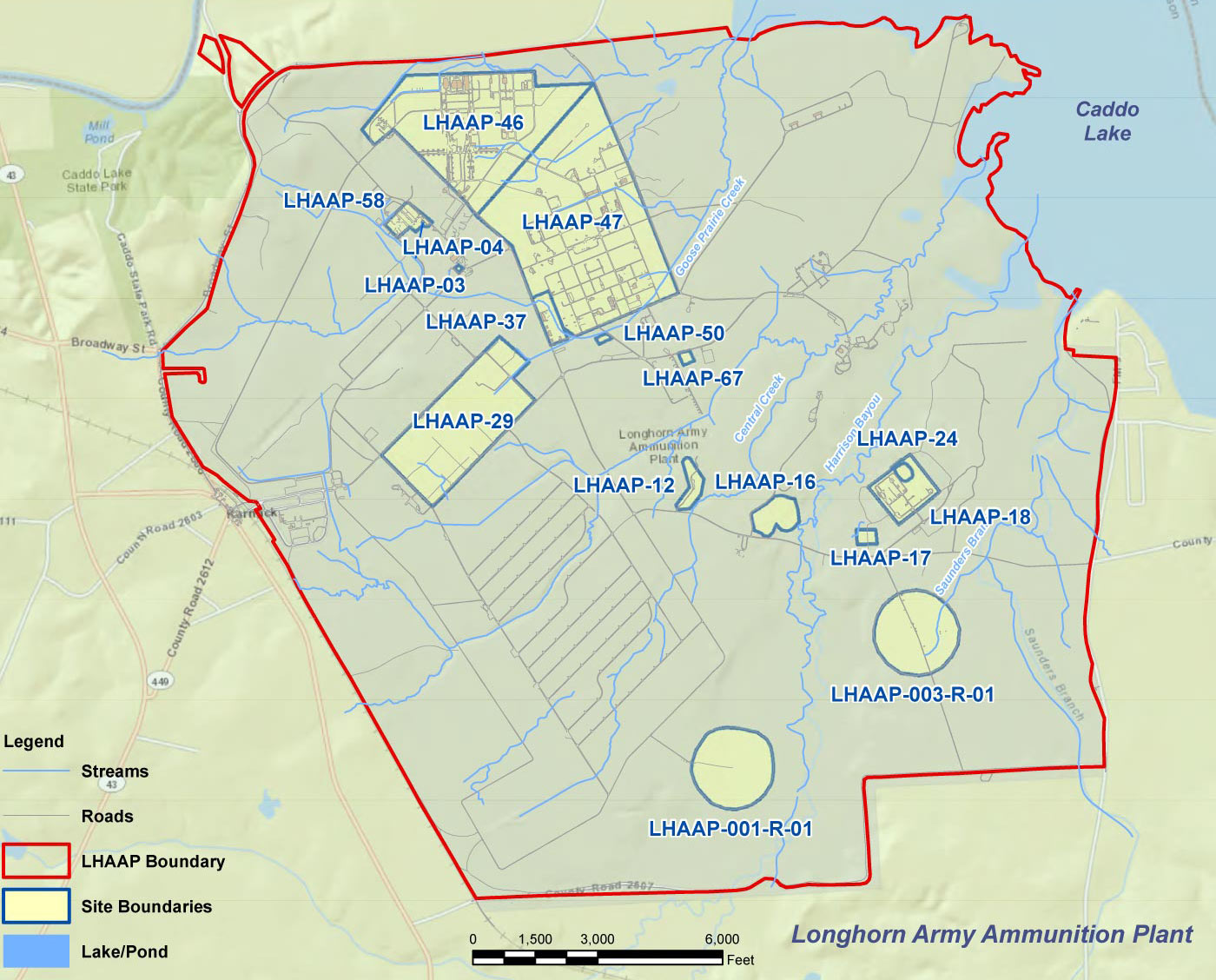Longhorn Army Ammunition Plant
Environmental Restoration Program
LHAAP-003-R-01
Site Description/History
LHAAP-003-R-01, also known as Site 54, the Ground Signal Test Area encompasses approximately 80 acres and is located in the southeastern portion of LHAAP. LHAAP-003-R-01 was used intermittently starting in April 1963 for aerial and onground testing and destruction of a variety of devices, including pyrotechnic signal devices, red phosphorus smoke wedges, infrared flares, illuminating 60 and 81 millimeter (mm) mortar shells, illuminating 40 to 155 mm cartridges, button bombs, and various types of explosive simulators. The site was also used intermittently over a 20-year period for testing and burn-out of rocket motors from Nike Hercules, Pershing, and Sergeant missiles.
Around 1970, a Sergeant rocket motor reportedly exploded in an excavated pit near the center of the site, however, later munitions and explosives of concern ( MEC) clearance to depth in the area found no rocket motor.
From late 1988 through 1991, the site was also used for burn-out of rocket motors in Pershing missiles destroyed in accordance with the Intermediate-Range Nuclear Forces Treaty between the U.S. and the former Soviet Union. Occasionally, leaking white phosphorus munitions were burned at the site as a demilitarization activity.
Remediation Activities
A MEC Removal Action ( RA) was performed in 2009, where the entire area underwent digital geophysical mapping and investigation, after which all surface MEC was removed. Upon completion of the Removal, restricted activities signage was installed, warning of MEC danger, no digging and contact information. Land Use Controls ( LUCs) and an educational program consiting of pamphlets and a video explaining the 3Rs (Recongnize, Retreat, Report) were put in place. The Removal Action ( RA) was followed by a Proposed Plan ( PP) and Record of Decision ( ROD).
Contaminants of Concern
No COCs – Limited groundwater sampling confirmed perchlorate level in groundwater is below TRRP Tier 1 Groundwater Residential PCL, which is the state remedial standard utilized in the absence of a federal drinking water standard.
Current Phase
Current phase consists of implementation of LUCs and Five-Year Reviews because explosive hazards may remain at the site that do not allow for unlimited use and unrestricted exposure.
Future Phase
Implementation of LUCs and Five-Year Reviews comprise future activities at the site.
